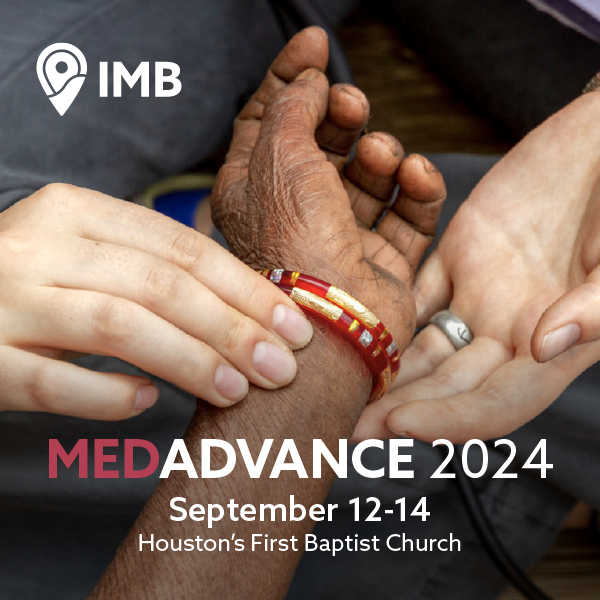
COLUMBIA, S.C. (BP)–Southern Baptists have always been theologically and politically conservative — and they will remain so unless they fail to evangelize a culture this is increasingly running counter to traditional Christian beliefs, according to a New York University Press book, “The Rise of Baptist Republicanism.”
The 1998 book, by Oran P. Smith, a Presbyterian layman and editor of Southern Partisan magazine, is a modification of Smith’s doctoral dissertation written while studying political science at the University of South Carolina. It was written under the supervision of Earl Black, a political science professor at Rice University and one of the most respected scholars on southern politics.
While the book is written primarily for political scientists and others in academia, denominational leaders and pastors, Smith said he believes it offers a unique perspective for all Southern Baptists because it ties the theological, political and sociological tendencies of America’s largest Protestant denomination into one package. In the end, it debunks notions that Southern Baptists are anything but conservative.
Smith said he picked Southern Baptists for his study “because of their size and influence. The Southern Baptist Convention is the only major denomination that has ever taken a turn to the [theological and political] right.”
With 16 million members, he said, “A group that large and that cohesive is fully capable of influencing the national dialogue in significant ways.”
Smith’s book traces the internal theological and political struggle between conservatives and moderates as well as the shift by Baptists in the South from being “Yellow Dog” Democrats to “Ronald Reagan” Republicans. In 1976, for example, 51 percent of Southern Baptists voted for Carter compared to 39 percent in 1980, while Reagan garnered 61 percent of their vote that year, according to Smith’s analysis.
While Smith acknowledges being a conservative, his book exhibits the typically benign character of an academic dissertation, providing research on where Southern Baptists stand on theological and political issues and assessments of mistakes he believes both conservatives and moderates have made.
However, Smith blames moderates for starting the conflict with conservatives in the SBC, a view he expressed with more vigor in an interview than in the book.
“They [moderates] just ignored the conservative theology that has always been in the SBC,” he said. “If moderates had offered the conservatives a biscuit, they might have stayed in power a little longer.”
Until the late 1950s, conservative leaders within the SBC — with the blessing of the rank and file — declined to fight with moderates over their increasingly pluralistic theology and liberal politics. Conservatives went to great pains to prevent secular politics from distracting the convention from its primary mission: winning lost souls to Christ. As a result, Smith writes in his book, SBC membership soared from 5 million to 10 million between 1940 and 1960.
Meanwhile, as SBC seminaries became more tolerant of unorthodox Christian theology and liberal politics, the number of moderates landing Baptist college professorships and denominational and state convention leadership positions increased, Smith notes. Then, when the influence of moderates was brought to bear on the convention, Smith cites three conservative “flare-ups” that eventually triggered the decisive conservative resurgence in the late 1970s.
First, there was the struggle against modernism (the belief that the claims of the Bible should be subject to rigorous scientific analysis) and Charles Darwin’s theory of evolution, culminating with the landmark Scopes Monkey Trial in Dayton, Tenn., in 1925. Conservative hackles were raised when moderates, buoyed by some state Baptist newspaper editors, accepted a version of “theistic” evolution, Smith writes. Conservatives viewed this as an attack upon the authority of Scripture and confirmed their fears that moderates were too willing to tolerate unorthodox Christian views and to compromise “the faith which was once for all delivered to the saints” with more worldly pluralistic views.
Second, while the conservatives were maintaining the don’t-detract-from-the-evangelistic-mission philosophy, another controversial issue surfaced in the 1950s: race. By this time, moderates had gained control of the Social Service Commission (which later became the Christian Life Commission and now is the Ethics & Religious Liberty Commission).
Smith describes what happened at the 1954 SBC annual meeting:
“Inserted into the SSC report at the last hour was a lukewarm commendation of the Supreme Court’s few-weeks-old Brown v. Board of Education ruling.” The convention passed the resolution overwhelmingly, but it upset conservatives — not because of race, Smith writes, but because moderates seemed to be involving the convention in a political issue that threatened evangelistic efforts.
No doubt the SBC did get involved in politics earlier in the century when it joined the fight for prohibition and against gambling. But in those cases, the conservative leaders made sure such efforts did not become the primary activity. The moderates’ calls for a more activist political role, however, came to be seen by the conservatives as a significant departure. Consequently, the conservatives’ answer to the race problem — often misrepresented by their critics — continued to be: Change men’s hearts through a personal relationship with Jesus Christ.
This seems to have created a paradox for moderates, who have been among the most vocal in recent years in expressing the need for separation of church and state, Smith writes. The moderates seemed to have violated their own injunction while also driving conservatives toward a more activist role in politics — the very thing conservatives preferred to avoid.
Third, as the century ushered in the 1960s, Smith articulates what he believes to be one of the most decisive incidents in the SBC’s history:
“SBC churches were still conservative, as was the denomination itself, but moderates very quietly and unobtrusively began to dominate Convention agencies,” Smith writes. Then in the 1968 SBC annual meeting, moderate agency heads got a statement passed calling for social action in race relations and anti-poverty efforts. The statement also admitted complicity in the injustices done to blacks.
Smith writes that James Dunn (a moderate, a governing board member of the leftist Americans United for Separation of Church & State, outgoing executive director of the controversial Baptist Joint Committee on Public Affairs and a close friend to President Bill Clinton) “suggests that the old mentality that smothered controversy in the name of evangelism and church building began to crumble as moderates infiltrated the Convention. The critical year, in his [Dunn’s] view, was 1968.” Smith then quotes Dunn: “That was a watershed year for Baptists … the hired hands, the real spark plugs of the denomination sought in Houston a programmatic commitment to an ecumenical political engagement that was not provincial … seeking social justice, a colorblind society, [the development of] an applied Christianity that looked after the poor, and education not indoctrination. [They decided it was] time to join the 20th century after all … to stretch the rubber band as far as it would go.”
What happened next, Smith writes, is that this “an aggressive campaign by the middle and left … touched a match to conservative dynamite.”
This incident was sandwiched between two others that Smith feels help light the conservatives’ fuse. The first was the 1963 publishing of Ralph Elliott’s Broadman Commentary on Genesis. In short, Elliott, who at the time was a professor at Midwestern Baptist Theological Seminary, argued that Moses was not the author. Elliott used historical and literary analysis that many felt demeaned the Bible. Elliott’s commentary shocked Southern Baptists. Conservatives still view Elliott’s case as a classic example of a Southern Baptist professor coming under the influence of more liberal theology taught by northeastern theologians who had imported their unorthodox views from German theologians like F.D.E. Schleiermacher, Julius Wellhausen and Rudolf Bultmann.
The second incident occurred in 1970, when the Christian Life Commission stunned the SBC by inviting the editor of Playboy magazine to address a seminar.
Smith is not critical of every moderate in his book and he does direct some criticism toward conservatives. For example, he is generous in the amount of space devoted to Brooks Hays, the Arkansas congressman who was twice elected president of the SBC. Hays, a moderate, has been praised for his work in helping improve race relations in the South. Conversely, Smith allows Charles Goolsby, a conservative who served as a parliamentarian adviser at the pivotal 1979 convention, to criticize conservatives whom Goolsby said “went too far” with convention politics.
But Smith defends conservatives for their “shrill rhetoric” against moderates. “That’s how conservatives beat back liberalism,” he said, or as a friend of Smith’s once put it: When the barbarians are at the gate, you don’t shake their hands. You grab your pitchfork and scream bloody murder!
Smith also details how SBC moderate leaders have aligned themselves with the Democratic Party, while conservatives have turned to Republicans. Moderates have supported President Clinton, Vice President Al Gore and former President Jimmy Carter, who supports the Cooperative Baptist Fellowship (CBF), a rival group whose leaders have been among the most critical of the current SBC leadership.
Conservatives in the SBC favor Republicans like Senate Majority Leader Trent Lott (Miss), Senate Pro-tempore Strom Thurmond (S.C.), outgoing House Speaker Newt Gingrich (Ga.), House Majority Whip Tom Delay (Texas), and Oklahoma Congressman J.C. Watts. Interestingly, all are Southern Baptists. Smith also discusses how Methodists, who had more members in Congress throughout the 1960s, have relinquished that honor to Southern Baptists in the 1990s.
Ironically, Smith believes that Clinton’s election only fortified the conservative beliefs held by Southern Baptists. “New strength is often the product of adversity,” he writes. “By that standard, with Bill Clinton in the White House, Baptist Republicanism has become steel belted. There is new ammunition daily for the big guns of the conservative right. The Clinton administration provides daily outrages to stir the conservative masses.”
With more and more people moving into the South, Smith warns that the SBC could be swallowed up by the culture unless it aggressively evangelizes the lost.
“You can see the changes already occurring in the South,” he said. “For example, stores are now open on Sunday and ‘dry’ counties have become ‘wet.’”
States where the SBC’s growth has exceeded population growth between 1930 and 1990, according to Smith’s research, include Arkansas, Alabama, Louisiana, Mississippi, South Carolina, North Carolina, Tennessee, Texas, Kentucky, Missouri and Oklahoma. SBC growth has not exceeded population growth in Virginia and Florida, while it has remained the same in Georgia. The SBC is growing fastest, meanwhile, in states outside the South.














